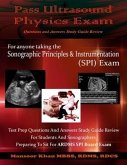The phenomena of time dilation and length contraction are interrelated. Length contraction is the contraction in length in the direction of motion of an object moving at relativistic speed. Measures of both phenomena vary with speed by the same factor. It is shown that the variations of time and length contraction with speed lead to relativistic mass, the increase in resistance to acceleration of an object as its speed relative to space increases.
Nature's fundamental forces derive from the exchange of force particles such as photons and gluons that move through space at the speed of light between higher order particles such as electrons and quarks. The tempo of these particle exchanges form the basic time-keeping of all processes. If these particle exchanges occur between higher order particles that are themselves moving through space, the force particles have farther to move between the higher order particles. The greater the traverse, the longer it takes. Any process moving through space that depends on a particle exchange thus takes longer than a process that moves more slowly through space. Again, time dilation is the increase in time taken by a process moving through space relative to the process that moves more slowly through space. Time dilation is not the slowing of time itself, although you might argue that the distinction between these two views is more about philosophy than physics.
There is a lot of redundancy in the book. I assert in several different chapters the notion that the space of the Universe must contain a medium that supports the propagation of photons and other force carrying particles.
Dieser Download kann aus rechtlichen Gründen nur mit Rechnungsadresse in A, B, BG, CY, CZ, D, DK, EW, E, FIN, F, GR, HR, H, IRL, I, LT, L, LR, M, NL, PL, P, R, S, SLO, SK ausgeliefert werden.









